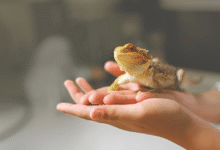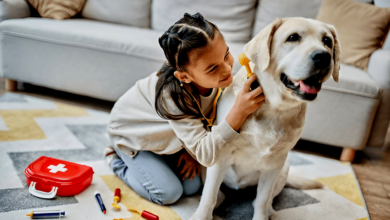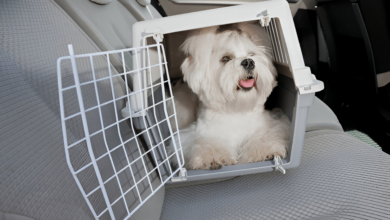
How to Socialize Your Pet for a Happy & Confident Life
How to socialize your pet for a happy, confident life. Learn tips, techniques, and benefits to help your furry friend thrive in any environment.
Socializing your pet is one of the most important steps you can take to ensure they lead a happy, confident, and well-adjusted life. Whether you have a puppy, kitten, or an older pet, proper socialize helps them adapt to new environments, people, and other animals. It reduces anxiety, prevents behavioral issues, and strengthens the bond between you and your furry friend. In this article, we’ll explore the importance of socialization, practical steps to socialize your pet, and tips to make the process enjoyable for both of you.
Socialization is not just about exposing your pet to new experiences; it’s about doing so in a positive and controlled manner. A well-socialized pet is more likely to be calm in unfamiliar situations, friendly with strangers, and comfortable around other animals. By investing time and effort into socializing your pet, you’re setting them up for a lifetime of happiness and confidence.
Why Socialization Matters
Socialization is the process of introducing your pet to a variety of experiences, environments, and beings in a way that helps them feel safe and secure. For puppies and kittens, the critical socialize period typically occurs between 3 and 14 weeks of age. During this time, they are most receptive to new experiences, and positive interactions can shape their behavior for life. However, older pets can also benefit from socialization, though it may require more patience and consistency.
Pets that are not properly socialized may develop fear, aggression, or anxiety. For example, a dog that has never been around children might become nervous or defensive when encountering them. Similarly, a cat that has never been exposed to other animals might react aggressively or hide when introduced to a new pet. Socialization helps prevent these issues by teaching your pet that new experiences are not something to fear.
Steps to Socialize Your Pet
Start Early but Proceed Gradually
If you have a young pet, begin socialization as early as possible. Introduce them to new sights, sounds, and smells in a controlled environment. For example, let your puppy explore different surfaces like grass, carpet, and tile. Expose your kitten to household noises like the vacuum cleaner or washing machine. The key is to start small and gradually increase the level of exposure.
Introduce New People and Animals
Socializing your pet with other people socialize and animals is crucial. Invite friends or family members to interact with your pet, ensuring they approach calmly and gently. Arrange playdates with other well-behaved pets to help your furry friend learn appropriate social skills. Always supervise these interactions to ensure they remain positive.
Expose Them to Different Environments
Take your pet to various places, such as parks, pet-friendly stores, or outdoor cafes. This helps them become accustomed to different environments and reduces the likelihood of fear or anxiety in new settings. For dogs, regular walks in the neighborhood are a great way to expose them to new sights and sounds.
Use Positive Reinforcement
Reward your pet with treats, praise, or playtime whenever they respond well to a new experience. Positive reinforcement helps them associate socialize new situations with positive outcomes, making them more likely to remain calm and confident in the future.
Be Patient and Consistent
Socialization is an ongoing process that requires patience and consistency. Some pets may take longer to adjust to new experiences, and that’s okay. Avoid forcing your pet into situations that make them uncomfortable, as this can have the opposite effect and increase their fear or anxiety.
Socializing Specific Types of Pets
Dogs
Dogs are highly social animals and generally respond well to socialization. Start by introducing your puppy to different people, including children, men, and women. Expose them to other dogs in a controlled environment, such as a puppy class or a friend’s well-behaved dog. Gradually introduce them to new environments, such as busy streets or crowded parks.
Cats
Cats can be more independent than dogs, but they still benefit from socialization. Introduce your kitten to different people and animals in a calm and quiet environment. Provide plenty of hiding spots so they can retreat if they feel overwhelmed. Use treats and toys to create positive associations with new experiences.
Small Pets (Rabbits, Guinea Pigs, etc.)
Small pets also need socialization, though the process may look different. Spend time handling them gently and regularly to build trust. Introduce them to new environments gradually, and ensure they have a safe space to retreat to if they feel stressed.
Common Challenges and How to Overcome Them
Fear or Anxiety
If your pet shows signs of fear or anxiety, such as trembling, hiding, or aggression, take a step back and reduce the level of exposure. Gradually reintroduce them to the situation at a pace they’re comfortable with.
Aggression
Aggression can be a sign of fear or lack of socialization. Consult a professional trainer or behaviorist to address the issue and develop a tailored socialization plan.
Overstimulation
Some pets may become overstimulated in new environments. Watch for signs of stress, such as excessive panting or pacing, and give them a break if needed.
The Role of Training in Socialization
Training plays a crucial role in socialization. Basic commands like “sit,” “stay,” and “come” help your pet feel more secure and confident in new situations. Training also strengthens the bond between you and your pet, making them more likely to trust you in unfamiliar environments.
Read More: How to Socialize Your Dog in 2023
Conclusion
Socializing your pet is a rewarding process that lays the foundation for a happy and confident life. By exposing them to new experiences in a positive and controlled manner, you can help them develop into well-adjusted and friendly companions. Remember to be patient, consistent, and attentive to your pet’s needs throughout the process.
In the end, the effort you put into socializing your pet will pay off in countless ways. A well-socialized pet is not only a joy to be around but also more adaptable and resilient in the face of new challenges. So, take the time to socialize your pet—it’s one of the best gifts you can give them.
FAQs
When should I start socializing my pet?
Start socializing your pet as early as possible, ideally during the critical socialization period (3-14 weeks for puppies and kittens).
Can older pets be socialized?
Yes, older pets can be socialized, but it may require more time and patience compared to younger animals.
What if my pet shows fear or aggression during socialization?
Take a step back and reduce the level of exposure. Consult a professional trainer or behaviorist if needed.
How long does the socialization process take?
Socialization is an ongoing process that can take weeks, months, or even years, depending on your pet’s personality and experiences.
What are the benefits of socializing my pet?
Socialization reduces anxiety, prevents behavioral issues, and helps your pet adapt to new environments, people, and animals.







